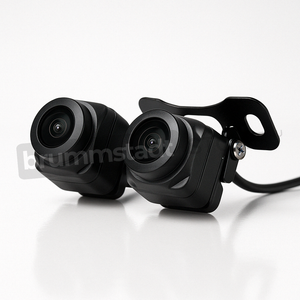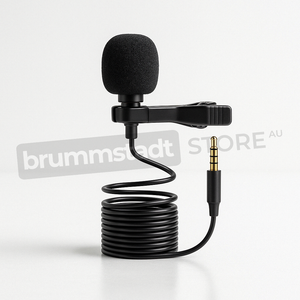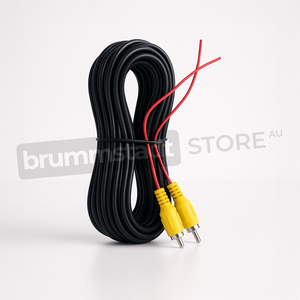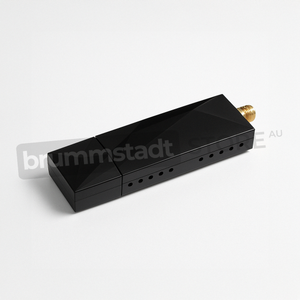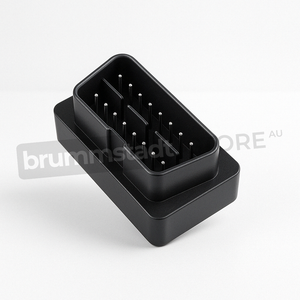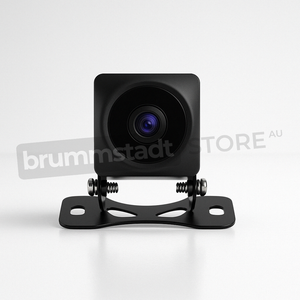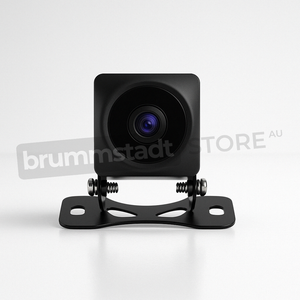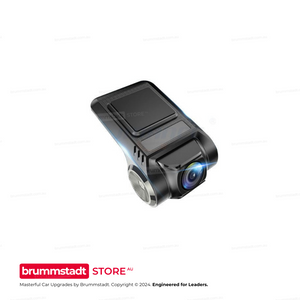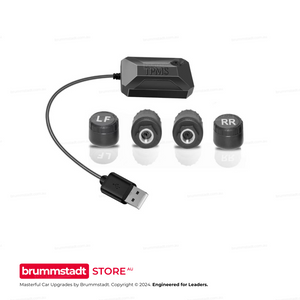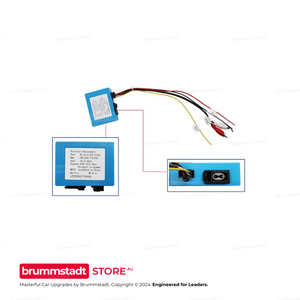Frequently Asked Questions
Everything you need to know about this head unit
Connect the single RCA cable with the yellow plug (included in your package) to extend your Bluetooth signal. This cable doubles as both a camera input AND a Bluetooth/WiFi antenna extension. The two small blue wires attached are antenna boosters that significantly improve connection stability. This simple connection takes 30 seconds and resolves 90% of Bluetooth issues. Make sure it's firmly connected even if you're not using a rear camera.
Try these proven solutions:
1. Quick Fix: Settings → Apps → Z-Link → Disable → Enable → Open (repeat each use)
2. Check Cables: Use the data/charge USB cable (not charge-only)
3. Bluetooth Setting: Disconnect all other Bluetooth connections - CarPlay needs exclusive access
4. Factory Reset Z-Link: Find the pink 'RESET' app, restart, reconnect Bluetooth, then try Z-Link
5. Sound Issues: Switch audio source to 'AUX' or 'USB/AUX' in your vehicle menu
Most issues are resolved with step 1 or 3!
The processor differs between models: The 2/32GB has a 4-Core processor, while 4/64GB and 8/128GB models feature the powerful 8-Core Cortex-A55 processor. Combined with RAM differences: The 2/32GB model with its 4-Core processor and limited RAM may experience slowdowns with heavy multitasking. The 4/64GB with 8-Core provides smooth performance for most users - no lag, seamless app switching, and enough storage for maps and music. The 8/128GB with 8-Core offers maximum performance with its generous RAM allowing unlimited multitasking and massive storage for extensive media libraries. Think of RAM like your desk space - more RAM means you can have more apps open simultaneously without slowing down.
Absolutely normal! These head units are complete replacement systems with their own GPS antenna, microphone, and Bluetooth module. Your factory connectors for these features won't be needed anymore. The important connections are: main power harness, speaker outputs, and the yellow RCA cable (even if not using a camera - it extends Bluetooth range). Any leftover factory plugs can be safely tucked away. If you're unsure about any connection, our support team is here 7 days a week.
Z-Link updates are handled through system firmware updates. Go to Settings → System → System Update. If an update is available, download it to a USB drive (FAT32 format) and install. Important: Never download Z-Link APKs from unofficial sources - they won't work and may cause issues. If you're having compatibility issues with newer iOS versions, the disable/enable workaround (Settings → Apps → Z-Link) usually resolves them while waiting for official updates.
Consider your usage:
• 2/32GB (4-Core): Budget option - fine for basic use, but may lag with multiple apps due to 4-Core processor and limited RAM
• 4/64GB (8-Core): Sweet spot - smooth Android Auto/CarPlay, multitasking, and ample storage
• 8/128GB (8-Core): Premium choice - unlimited multitasking, massive storage, future-proof for years
Most customers choose 4/64GB for the perfect balance of performance and value. The extra RAM makes a huge difference in daily smoothness!
The yellow RCA cable's blue antenna wires also boost WiFi signal! Make sure this cable is connected. Additionally, try these tips: Position the blue antenna wires away from metal surfaces, check that your phone's hotspot is set to 2.4GHz (not 5GHz) for better range, and ensure the head unit's WiFi sleep policy is set to 'Never' in Settings → WiFi → Advanced. For best performance with wireless CarPlay, keep your phone within 1-2 meters of the head unit.
Go to Settings → Sound → Equalizer and adjust to your preference. For more volume, increase the 'Loudness' setting. The 4/64GB and 8/128GB models have superior audio chips that provide cleaner, louder sound. If you have an amplifier, use the RCA outputs for best quality. Also check Settings → Factory Settings (password usually 126) → Audio settings for additional gain controls. Remember: higher-spec models (4GB+) include premium audio components for noticeably better sound.
Yes! Most vehicles work instantly. If not, use the steering wheel learning app: tap the steering wheel icon, press each button on your wheel, and assign functions. For newer vehicles with CANbus, we provide CANbus modules for automatic setup. Some vehicles may need the Key1/Key2 wires connected (usually included in our harness). If you're having trouble, let us know your exact vehicle model and we'll provide specific instructions.
We offer a 30-day return policy. If it doesn't fit or there's a compatibility issue, we'll work with you to resolve it. If you change your mind, a 20% restocking fee applies. Our team verifies compatibility before shipping to minimize issues. We provide installation support 7 days a week to help resolve any problems. With our 3-year warranty and Australian-based support, you can purchase with confidence. Full details in our Refund Policy.
The Historical Legacy of the Ford Transit:
First Generation (1965–1977): A Foundation for Trust
The Ford Transit emerged initially in the mid-1960s, primarily serving the European markets. Instantly popular due to its spacious and practical layout, the original Transit rapidly became the vehicle of choice for tradespeople and commercial fleets. Renowned for durability, ease of maintenance, and unmatched cargo-carrying flexibility, the first-generation Transit set benchmarks for reliable commercial motoring throughout Europe and eventually internationally.
Second Generation (1978–1985): Enhanced Capability and Comfort
Evolving in the late 1970s, the Transit underwent significant advancements in refinement, capability, and improved ergonomics. With superior comfort, better ride quality, and more robust engine offerings—including efficient diesel options—this generation secured Transit’s global reputation, consistently embracing the diverse demands of commercial transportation.
Third Generation (1986–2000): An Era of Expansion and Versatility
This long-standing iteration witnessed Transit gaining prominence beyond Europe, expanding towards Australia and Asia in addition to solidifying its presence across the continent. Vehicles within this generation grew more purposeful in both body style and configuration, deeply addressing operators’ differing logistical needs. Dependable diesel engines, dependable construction quality, and valuable customization options led drivers from all backgrounds to embrace the Transit as an indispensable work partner.
Fourth Generation (2000–2013): Contemporary Refinements and Innovation
At the start of this millennium, Ford delivered a thoroughly modern Transit featuring more refined driving dynamics, updated styling, advanced safety features, and improved driver ergonomics throughout the cabin. This solidified the Transit as a respected choice for businesses, private operators, emergency services, and courier industries worldwide. Its tough durability, adaptability, and attention to driver comfort earned it widespread acclaim and broadened its audience significantly.
Ford Transit Custom Introduction (2012–2017): Compact Functionality Meets Refinement
Recognizing distinct market needs for urban-friendly yet substantial load carriers, Ford introduced the Transit Custom in 2012 as a complementary smaller sibling within the expansive Transit family. Perfectly suited to congested urban environments yet capable enough for longer journeys, the Transit Custom offered practical sizing, impressive cargo space, improved cabin refinement, and valuable technology features. With recognition like the International Van of the Year award in 2013, its reception was enthusiastic, underscoring Ford’s commitment to blending practicality and quality seamlessly.
Ford Transit Custom (2017–2020): Refined Efficiency, Thoughtful Sophistication
Between 2017 and 2020, the Ford Transit Custom evolved further still, introducing meaningful updates that firmly positioned it as a trusted leader amongst medium-sized commercial vehicles. Within this period, styling refinements sharpened the Transit Custom’s visual character—reflecting a more dynamic and pronounced appearance on the road while delivering improvements in aerodynamics. Powertrain enhancements throughout these years included Ford’s advanced EcoBlue diesel engines, praised widely for smooth torque delivery, efficiency, reliability, and compliance with stringent environmental standards.
Driver comfort and cabin sophistication also saw significant strides. This generation Transit Custom presented drivers and passengers with enhanced interior materials, elevated seating ergonomics, improved sound deadening for reduced cabin noise, and refined instrumentation layouts designed for intuitive functionality. Safety technology portrayed notable development, integrating features like adaptive cruise control, autonomous emergency braking, cross-traffic alert, and lane-keeping assistance, dramatically boosting both confidence and security during long hours of commercial transport.
Integrating Forward-Thinking Technology: A Brummstadt Head Unit Option
Advancing the Transit Custom’s practicality and comfort are thoughtfully chosen aftermarket infotainment systems, including premium head units offered by specialized brands such as Brummstadt. These tailored infotainment solutions provide significant benefits for drivers seeking better navigation support, multimedia integration, smartphone connectivity, and safety functionality. A compatible Brummstadt unit would considerably advance the Transit Custom’s interior experience, without interfering with the model’s original aesthetics or dashboard ergonomics.
Incorporating intuitive interfaces, such a system provides convenient wired and wireless compatibility with Apple CarPlay and Android Auto. Drivers benefit immensely from familiar, accessible navigational assistance through apps like Google Maps, Apple Maps, or WAZE. Envision diners gathered at a favorite restaurant for an enjoyable evening; before departure, the driver seamlessly sets the next destination via their smartphone. Upon entering the Transit Custom, Apple CarPlay or Android Auto instantly projects that route clearly onto the head unit’s display, ensuring hassle-free commuting and eliminating stress from unfamiliar driving scenarios.
Additionally, this Brummstadt infotainment solution offers attractive upgrade options including integrated front and rear high-definition cameras supporting full 1080p recording—an asset for enhancing safety awareness, security documentation, and providing valuable video footage in case of an incident.
Innovative technology options extend beyond traditional usage as well, featuring entertainment applications that transform downtime into enjoyable memories with passengers. USB-connected game controllers allow multiplayer gaming directly through the unit’s vivid touchscreen, altering lengthy family trips into relaxed, interactive experiences for everyone onboard.
An added dimension of intelligent convenience and safety arises via advanced voice-control functionality. These head units integrate naturally with voice assistants—such as Siri or Google Assistant—not only facilitating intuitive control of navigation or multimedia, but expanding interactions even to home-connected smart devices. Issues as simple as illuminating home porch lights prior to arrival exemplify practical scenarios where technology integration enhances security, safety, and peace of mind effortlessly during everyday journeys.
Performance, Practicality, and Driving Experience: Transit Custom’s Strengths
Boasting efficiency-driven engines, time-tested durability, impressive cargo configurations, and considerate interior features, the Transit Custom comfortably accommodates varied transportation expectations. Its balanced on-road comfort allows drivers efficient urban navigation while sufficiently addressing longer highway commutes, indicative of a thoughtful commercial design accommodating widely varied tasks.
Drivers greatly appreciate thoughtfully crafted cabins, meaningful safety configurations, and refined powertrains across the model’s generations. Detailed attention to convenience enhances daily usage, allowing drivers to concentrate fully on their essential tasks free from added distraction.
The meticulous application of aftermarket technology, such as Brummstadt’s premium infotainment upgrades, intensifies the already substantial advantages of owning these capable commercial vehicles. Such accessories create more satisfying journeys, allow safer travel, facilitate clearer communication, and deliver smarter integration into owners' broader digital and personal lives. Ultimately, they empower the Transit Custom’s underlying emphasis: flexibility, reliability, performance—and genuine satisfaction for anyone spending considerable hours behind this celebrated vehicle’s thoughtfully designed steering wheel.










